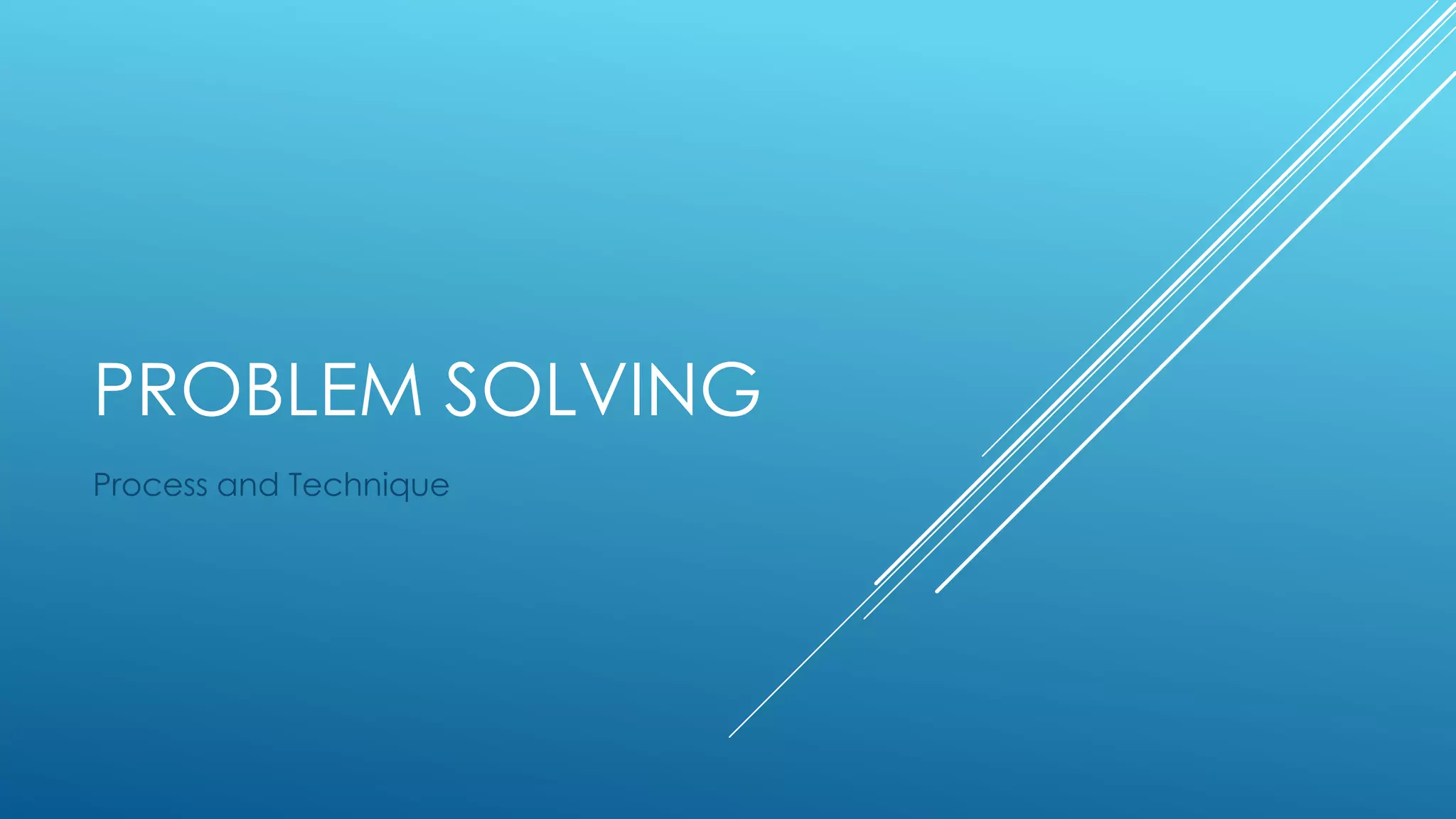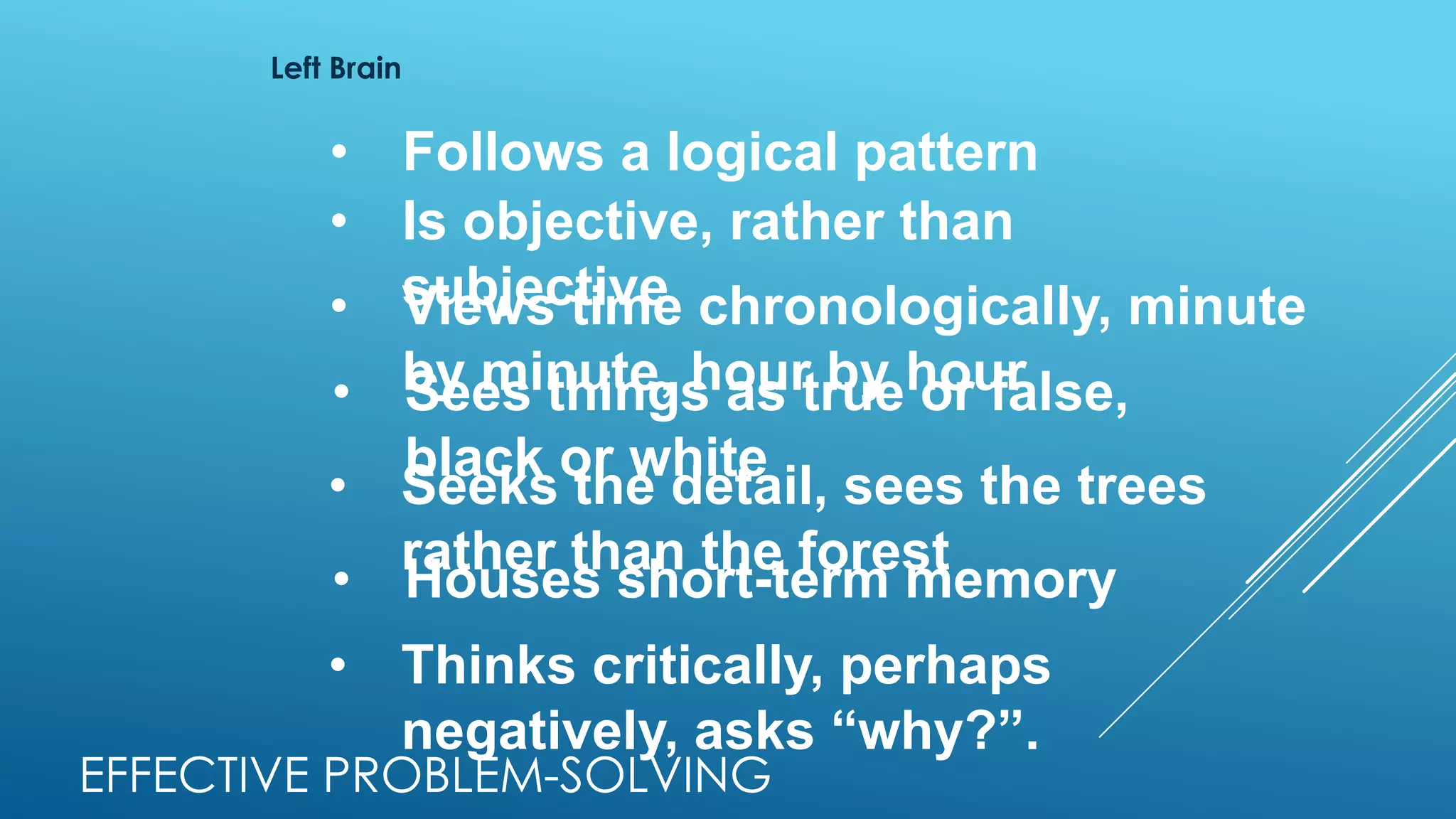The document discusses problem solving techniques including defining the problem, generating solutions, and planning action. It describes the problem solving process as having three stages: defining the starting issue, finding solutions, and planning action. Interpersonal problem solving skills are also covered, such as presenting yourself, expressing displeasure politely, using humor, considering alternative solutions, brainstorming, means-ends thinking, and considering consequences. The document contrasts left brain and right brain approaches to problem solving.














